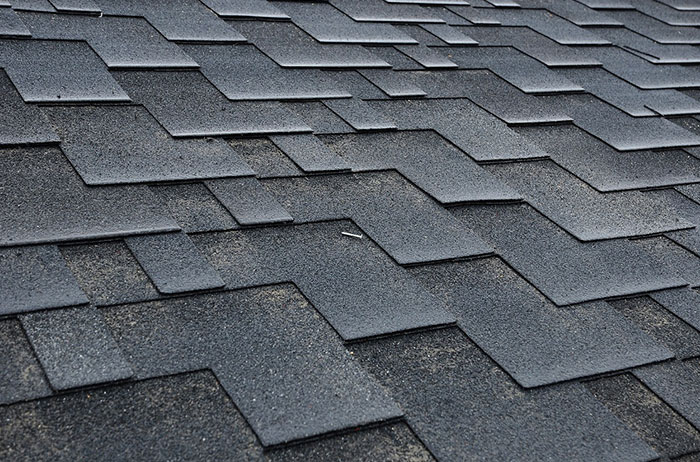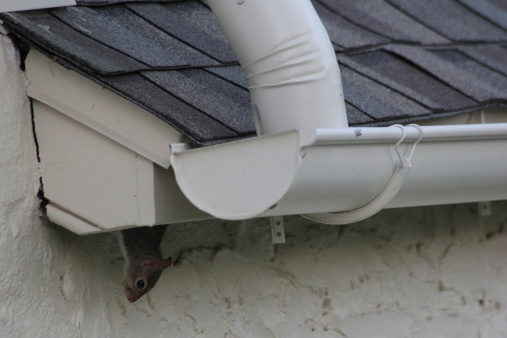Though gutters are seen as just simple arrangements of connected plastic pipes, they are more than just that. Gutters are complicated systems of different components that work together to direct water run-off from your roof and foundation. This post will discuss the components that make a successful gutter system.
1. Gutters
The gutters are the long, rounded components that run horizontally along the ends of the roofline. They work to collect rainwater and debris. Then they transport it down the pipeline. Gutters can come in different colors, shapes, materials, and styles. Generally, gutters take one of two major forms.
They can either be seamless or regular. This means a gutter can either be one long piece or multiple short components that you will need to connect to make them whole. If you are wondering which is better, the seamless gutters are usually better. Seamless gutters drain water better than the multiple seam types. They do a better job than the short piece types with seams at every 10 feet of its length.
Moreover, seamless gutters can be custom-fabricated to any length to fit your home’s roofing features. As a form of best practice, you should consider using prepainted aluminum with a thickness of 0.032 aluminum for your roofing gutter. This is because gutters with better pitch can drain water faster than level gutters.
2. Downspouts
The gutters may collect the rainwater, but the water still needs to flow outside the gutter somewhere. This place is what they call the downspouts. Downspouts are the pathways from the roof’s higher eaves to the ground. They are like the vertical counterpart of the roof’s gutters.
Roof downspouts are usually Installed against your building’s exterior wall. They feature downpipes that descend to the ground and convey water away from the building or into a drain. Through this process, they direct water away from your walls and foundation. Most times, the downspout’s vertical pipes usually have spacings between them every few feet along a gutter. This procedure allows water to flow better.
Furthermore, it is also good practice to build downspouts with prepainted.032 aluminum. Downspouts may also come in different colors, just like gutters. However, in contrast to seamless gutters, downspouts usually have a 10-foot length build. This is not a concern since they direct water vertically, not horizontally, as gutters do. They, therefore, only need seams at most 10 feet.
What’s important, however, is the size of the downspouts. The downspout’s size is important because it determines how much water it can transport. Professionals generally recommend 3″ x 4″ rectangular downspouts because they can drain almost twice as much water as 2″ x 3″ downspouts.
3. Gutter guards
If you have tall trees around your home – especially close to your roof – it is essential to consider gutter guards. These gutters guards only sometimes come fitted with the gutter. Instead, you fit it yourself directly onto the gutter system. When you have a gutter guard over your gutters, it will help collect various materials that tend to block your gutters.
It keeps materials like twigs, leaves, dirt, and debris away from your gutters so water can flow freely. Gutter guards act like cages for keeping debris away from your gutters. Though some material may still get through, the gutter guards will help you remove most debris.
4. Elbows
Just like the elbow is a crucial joint in the human arm, the elbow is a crucial component in the gutter system. Its purpose in gutter systems is similar to that in the human arm. Gutter elbows are usually in the form of angular pieces that make it easy for the gutter system to better travel around the bends of a home. It ensures to properly connect the adjacent pieces of a gutter system around the roof’s corners.
Since they are one of the most problematic parts of a gutter system, it is important to install them properly. You must use a good seal to connect the end joints with the downspouts. This will help prevent the clogging of debris along the joints.
5. End caps
Since gutters are just long, hollow tubes, they need stoppers at each end. The end caps are the pieces of materials roofers attach as stoppers to the open sides of gutters. These end caps serve as guides on the sides of the gutter system. They force the water down the available path in the gutter and then into the downspouts.
The process of installing end caps is very similar to installing gutters. However, there is a difference in the sense that the process of installing end caps may vary depending on whether it is needed on the left or right side of the gutter. Regardless of the position, you should fasten end caps to the gutter by tightly folding the metal or using aluminum pop rivets. You may also seal your end caps with sealant to prevent leaks.
6. Outlet tubes
Outlet tubes usually fit into the downspout connection hole in your gutter. When installing rectangular downspouts, it is important to use rectangular outlet tubes to increase their capacity for draining water. An exit tube with an oval or round shape won’t be as effective as one with a rectangular shape similar to a 3″ x 4″ downspout.
7. Fasteners
Your choice of fastener plays a significant role in your gutters and downspouts’ long-term functionality and aesthetic appeal. You must place screws through the fascia boards and into your roof’s structural elements. This helps to support the gutter even when it starts overflowing with water or debris.
It is also advisable for you to use aluminum rivets in your gutter miters to offer a corrosion-free look. Lastly, you need stainless steel zip screws to fasten downspout parts because they are also corrosion-resistant. Most galvanized steel tends to corrode in as little as 3-4 months.
8. Splash guards
Splash guards are usually built with prepainted aluminum and frequently match the gutters’ color. You will often find splash guards at the point where a valley drains into a gutter. Without the splash guards, the water in the valley could overflow beyond the gutter and run over to the side of your house. This is because the water in the valley tends to travel faster than the water in the roof field.
9. Downspout straps
Using downspout straps for each 10-foot length of downspout attached to your home’s roofing structure is necessary. Ideally, the straps should be thicker than the metal fastening. These straps can be pre-made in the same color as the downspout by the manufacturer, and they can also be fabricated on-site.
Proper fastening is necessary to keep the downspout to the building when a heavy storm occurs.
10. Sealant
You cannot solder aluminum gutters due to their painted finish. As a result, the best method for preventing leaks at gutter attachments such as outlet tubes and endcaps is to use an elastomeric sealant.
These elastomeric sealants are usually applied on the insides of the gutter, so they are not visible from the ground. Elastomeric sealants are generally better options than most sealants since they are resistant to UV degradation.
Conclusion
If you are in the market for a new gutter system, keep these 10 components in mind. A successful gutter system has many important parts that protect your home or business from water damage. If you have questions about which type of gutter system is right for you, don’t hesitate to contact us at Shoreline Roofing. We are happy to help you choose the best option for your needs.



